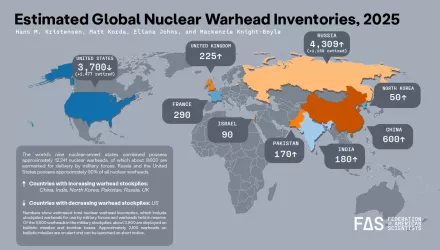Abstract
The rise of a nuclear-armed China is presenting the United States and its allies in the Asia-Pacific region with a new reality that they must confront. Driven by an ideological belief that it is China's destiny to reclaim its regional preeminence, it is strategically posturing itself on both the economic and military fronts to achieve this end state. In just 43 years, China has risen from one of the weakest economies in the world to the number two economy, second only to the United States, which it is on track to surpass by 2030.
Concurrent with this economic rise has been 21 years of consistent increases in defense spending, with the 2012 expenditure an impressive 11.2 percent higher than the previous year. This increase in military spending is enabling China to grow and modernize its conventional and nuclear forces, and is dramatically improving its ability to forward project its military power in the Asia-Pacific region. China's power projection and engagement in regional territorial disputes is increasing tensions with its neighbors and driving them to increase the strength of their militaries. It is also forcing the United States to take a renewed military interest in the region to secure its own national interests and to allay the fears of its allies.
While China has been a nuclear-armed power since the mid-1960s, and has held to a minimum nuclear deterrent posture and "no first use" policy, the recent growth and modernization of its nuclear forces is indicative of a potential shift in strategic direction. When combined with a lack of transparency about its nuclear weapons force structure, capability and number of warheads, the situation is becoming more concerning. The rapid development and fielding by the United States and Japan of ballistic missile defense systems, designed to counter the emerging threats presented by Iran, North Korea and rogue actors, is further exacerbating the situation. From China's perspective, these systems are threatening to its ability to maintain a viable retaliatory nuclear strike capability, a foundational element to it remaining with a minimum nuclear deterrent posture.
The military buildup by China, its Asia-Pacific neighbors and the United States is creating a classical security dilemma that is increasing the potential for military conflict in the region. Although history is replete with conflicts between existing and rising powers, conflict between China and the United States is not preordained. Opportunities exist in both the diplomatic and military arenas for both countries to actively engage the other in open and direct communication to increase transparency, reduce tensions, and improve understanding. It is in the best interest of the United States, China and countries around the world to confront the reality that is a rising nuclear-armed China and, in doing so, manage its accession into the regional and world order without conflict.
Kelley, David. “Confronting the Reality of a Rising Nuclear-armed China.” Managing the Atom Project, Belfer Center, April 2013




